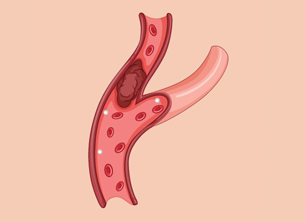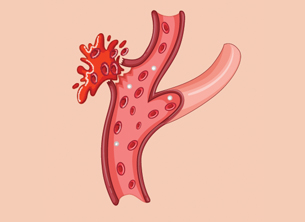Strokes and Seating – What To Consider
The brain injuries caused by strokes are a major cause of adult disability in the UK.
A stroke is a serious, life-threatening medical condition that occurs when the blood supply to part of the brain is cut off. In the UK, strokes are a major health problem. Every year, around 110,000 people have a stroke in England and it is the third largest cause of death, 1 in 8 die within the first 30 days.
Risk Factors
You are at higher risk of having a Stroke if you suffer from one of the following,
- High blood pressure.
- Inactivity.
- Diabetes Mellitus.
- The taking of oral anticoagulants e.g. warfarin.
- High levels of blood lipids.
- Poor diet and obesity.
- High stress levels.
Types

Ischaemic
Most common – a blockage usually a blood clot, cutting off the blood supply to the brain.

Haemorrhagic
Most serious - bleeding in or around the brain. The bleed can come from either a burst artery or a bleed on the surface of the brain.
Signs and Symptoms
The symptoms vary enormously between each individual due to which part of the brain has been affected, therefore there is no typical pattern, some of the signs and symptoms are highlighted below:
- Tiredness and fatigue will often persist long after the initial stages, it is often associated with the physical and emotional impact of the stroke.
- Pain, initially associated with muscle stiffness and swelling and in later periods due to contracting muscles if range of movement is not maintained.
- Problems with balance and mobility, numbness, weakness or paralysis of one side of the body will impact on a individual's ability to walk and maintain good balance.
- Continence issues.
- Communication problems, there are significant number of potential impacts including slurred speech due to poor muscle strength (Dysarthria), inability to articulate words (Expressive aphasia), inability to understand words (rReceptive aphasia).
- Swallowing problems due to reduced muscle strength.
- Behaviour changes, including becoming cross quickly, becoming withdrawn and depressed, lack of interest or engagement in previously enjoyed activities or loss of inhibition.
- Vision, including, but not limited to central and peripheral loss.
- Memory problems.
Seating
Sitting someone following a Stroke needs to allow for the fact that the conditions affects each person in a different way, there are no set rules about suitable seating. However the chair should enable the user to:
- Be comfortable.
- Be seated in a position that promotes good posture.
- Avoid the impact of their ataxic movements e.g. through appropriate padding.
- Reduce any pressure damage
- Continue to allow them to carry out normal activities whilst in a seated position.
- Want to use the chair, by meeting their own aesthetic needs and by matching in with their décor.
Considerations when looking for a suitable chair:
The symptoms vary enormously between each individual due to which part of the brain has been affected, therefore there is no typical pattern, some of the signs and symptoms are highlighted below:
- The height of the seat must allow the user to sit with their feet flat on the floor. remember to ask whether a client uses slippers or not as this will affect height.
- The seat width needs to provide enough support to prevent a user slumping in the chair and support the weaker side of the body if this is appropriate.
- The seat depth should be long enough to support the femur but not too long to cause pressure problems behind the knees.
- The arm rests should be at a suitable height to enable a resting position that does not push the shoulders upwards and far enough forward to support effective sit to stand transfers.
- The back should be high enough to support the upper limb and avoid pressure points.
- The material used can allow for ease of washing/wiping in case of continence problems.
- The controls should be easy to use one handed if necessary, be simple to operate, both physically and cognitively.
- If the user is having on-going therapy consider whether the chair can support/facilitate therapeutic sessions and encourage neuro-receptor stimulation to aid recovery.
Recommended seating
Below we have linked to some of the chairs in the Repose range that might be considered. Others in the range may be suitable, but this will depend on the clients conditions.
